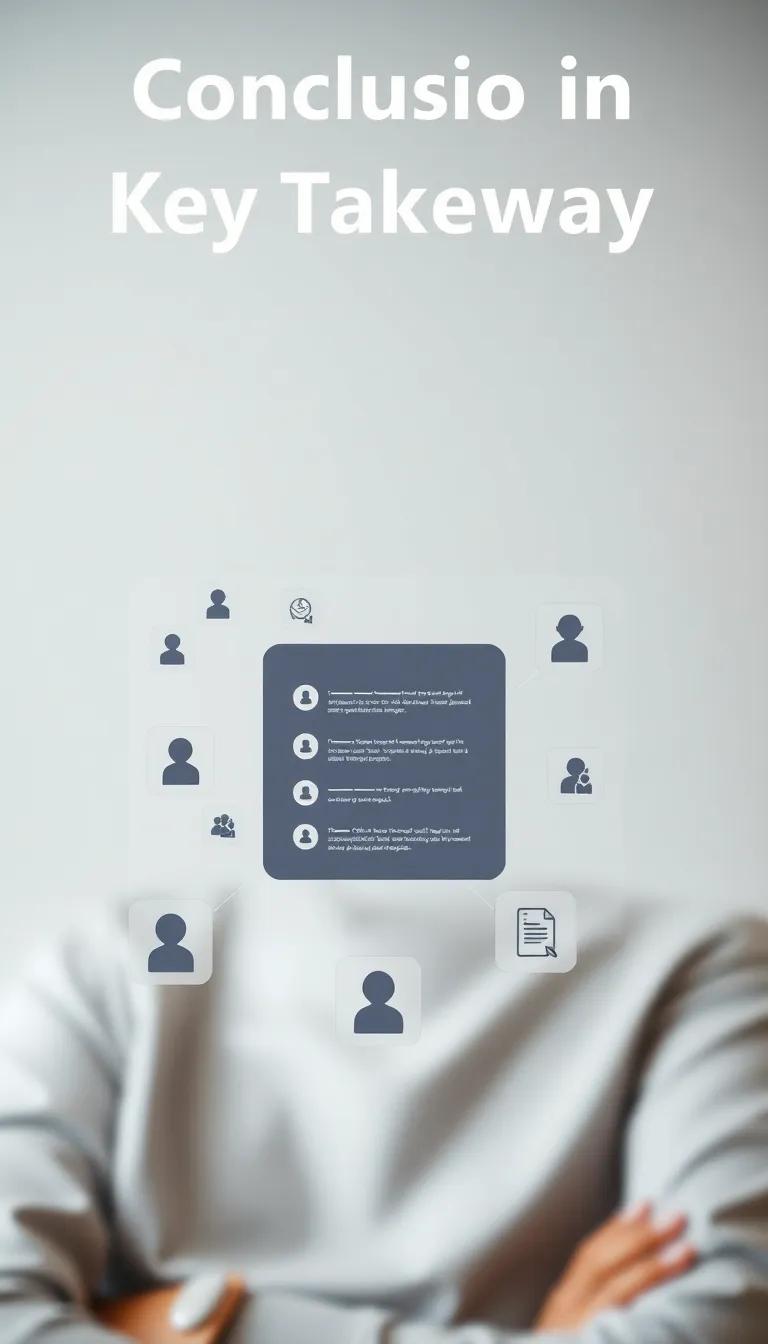Introduction
In today’s online world, customer engagement tools have come a long way especially with free chat widgets for websites. These little tools have changed how businesses talk to their customers by offering quick help and personal communication. As tech gets better and better, it’s super important for companies to keep up with chat predictions to make their online interactions even better. With smart chat features backed by improvements in predictive analytics and chatbots, businesses are heading toward a future where customer experiences are smooth, efficient, and full of useful insights.
This piece dives into the ins and outs of chat forecasting systems and how they help predict what users like and how they behave. By looking at the latest trends in chat tech, we’ll see how these new tools not only help businesses but also make users happier overall. As we look at the key areas of this shift, from the basics of AI chatbots to the clever ways of predictive analytics, you’ll pick up some handy tips on how to use these technologies to boost customer engagement.
Understanding Chat Forecasts The Significance of Chat Forecast in Modern Customer Service
Chat forecasts represent a pivotal development in the sphere of customer service, specifically through the lens of website chat widgets. A chat forecast entails the predictive analysis of user interactions within chat environments, giving organizations tools to anticipate customer needs, optimize service delivery, and enhance overall user experience. This emerging trend is characterized by employing advanced algorithms and machine learning to analyze historical chat data, which aids businesses in making proactive decisions.
The significance of chat forecasts lies in their ability to transform traditional customer service paradigms. By enabling companies to predict peak times of customer inquiries, common user queries, and potential challenges, chat forecasts can enhance operational efficiency. Furthermore, they allow for personalized customer interactions, as organizations can leverage historical data to tailor conversations based on individual preferences and behaviors. This relational aspect promotes customer loyalty and a sense of value, as clients feel understood and catered to when they engage with chat widgets.
Conversely, the impact of chat forecasts extends beyond mere efficiencies; they ultimately reshape user experience on websites. By anticipating user needs, chat forecasts facilitate faster response times, resulting in reduced wait periods for customers. This is increasingly significant in an era where instant gratification is paramount. The integration of chat forecasts into customer service strategies also strengthens the overall brand perception, portraying companies as responsive and customer-focused.
Also using chat forecasts opens the door for ongoing improvements. With insights from predictive analytics businesses can keep updating their chat interfaces and FAQs to really fit what customers need. This friendly approach boosts user happiness and helps cut down on the operational costs tied to answering the same questions over and over and dealing with slow service.
Understanding chat forecasts illuminates their crucial role in modern customer service. By anticipating customer interactions through data-driven insights, organizations can significantly enhance user experience while also streamlining their service delivery systems. As technology advances, chat forecasts will likely become an indispensable element of customer engagement strategies, fundamentally altering how businesses interact with their clients online.
The Rise of Website Chat Widgets Investigate the Evolution of Website Chat Widgets and Their Proliferation in Online Customer Service
The journey of website chat widgets has been marked by significant transformation and growth, evolving from basic text tools to sophisticated interfaces that enhance the customer service experience. Initially, chat widgets were simple text boxes that allowed users to send messages to customer support representatives without the need for email or phone interactions. These early iterations provided a rudimentary solution, facilitating real-time communication but lacking the intuitive features that would come later. Over time, businesses began to recognize the value of instant communication as a means of improving customer satisfaction and operational efficiency.
As internet technologies progressed, so too did the functionality of chat widgets. The integration of features like automated responses, user customization, and the ability to embed multimedia elements marked a significant shift. The advent of software development kits (SDKs) made it simpler for businesses to implement chat solutions on their websites, which contributed to the widespread adoption of these tools across various sectors. This proliferation was driven not only by the demand for immediate support but also by the emergence of customer-centric business models prioritizing user engagement.
Recent years have seen the introduction of free chat widget options, which democratized access to this technology, allowing small businesses to compete alongside larger corporations in delivering superior customer service. This movement has resulted in an expansive variety of chat solutions on the market today, catering to different industries and use cases. Companies now have a plethora of options to choose from, each offering customizable features that align with their specific customer engagement strategies.
Also, paying more attention to user experience has pushed developers to keep coming up with new ideas. Adding analytics tools to chat widgets helps businesses understand how their customers interact, which helps them improve their services and better target their marketing. Plus, the feedback that chat widgets provide lets companies tweak their strategies to fit changing customer needs, which boosts retention and loyalty.
The continuous evolution of chat widgets reflects broader trends in digital communication and customer service. As businesses adapt to changing consumer expectations, the importance of real-time interaction and responsive service remains paramount. In this context, the role of chat widgets is only expected to grow, setting the stage for further advancements that could reshape customer engagement in the future.
Technological Advancements Behind Chat Widgets Harnessing AI and Machine Learning
The technological foundation of modern chat widgets rests significantly on advancements in artificial intelligence (AI) and machine learning (ML). These technologies have not only redefined automated customer service but also elevated user engagement through intelligent, context-aware interactions. At the core of these innovations lies natural language processing (NLP), which enables chat widgets to understand and interpret human language, allowing for more nuanced and effective communication between brands and consumers.
Modern chat widgets utilize NLP algorithms to analyze and categorize user queries. By understanding language context, sentiment, and intent, these widgets can deliver more relevant responses. For instance, if a customer expresses frustration, the AI can recognize the emotional tone of the message and respond with empathy, highlighting the importance of human-like interaction in automated environments.
Machine learning plays a vital role by allowing chat bots to adapt and improve based on previous interactions. As these systems engage with users, they gather data, learning from each conversation to enhance their knowledge base and responses over time. Such continuous improvement helps increase accuracy and relevance, ultimately leading to enhanced customer satisfaction.
The power of AI and ML does not stop at mere conversation management; they also pave the way for advanced predictive capabilities. By analyzing historical data and trends, chatbots can forecast potential customer needs, proactively providing assistance or recommendations before users even form a specific inquiry. This capability empowers businesses to craft personalized experiences, fostering customer loyalty and deeper relationships.
Also, when you connect chat widgets with other online platforms and CRM systems, it really boosts what they can do. This link means the widgets can tap into customer profiles and past chats, making sure conversations flow smoothly and fit each person’s needs.
Tech improvements with chat widgets powered by AI and machine learning are changing how businesses connect with people. These tools help with quick communication, speed up response times, and make solving issues easier. Chat widgets boost customer experiences and are now must-have tools for companies wanting to succeed in a busy market. Looking ahead, these technologies are set to bring even more exciting changes, paving the way for a more interactive and responsive online world.
Predictive Analytics in Chat Systems
Enhancing Chat Widget Functionality
Predictive analytics plays a transformative role in advancing the functionality of chat widgets, particularly in the realm of user interaction and experience. At its core, predictive analytics utilizes historical data, algorithms, and machine learning techniques to make informed predictions about future interactions. By harnessing this technology, businesses can provide chat solutions that are not only efficient but also dynamic and adaptive.
One of the primary advantages of integrating predictive analytics into chat systems is the ability to anticipate user needs. For example, chat widgets can analyze previous interactions, user behavior, and preferences to predict queries and offer relevant solutions proactively. This approach minimizes user effort and enhances the overall satisfaction by presenting answers before users even have to ask. The result is a seamless experience where users feel heard and valued.
Further refinement of chat widget functionality is often achieved through natural language processing (NLP), which complements predictive analytics. By analyzing the context and sentiment behind user messages, chat widgets can deliver personalized responses that resonate with individual users. Whether it’s adjusting tone, style, or specific content based on the recognized sentiment, this capability not only enriches engagement but strengthens the bond between the service provider and the user.
Predictive analytics helps build chatbots that can tackle more complicated questions. Since these systems learn from a bunch of data gathered from many chats, they get better at responding over time. This ongoing improvement means they become more accurate and relevant when solving problems, which makes users trust and count on chat services even more.
The impact of predictive analytics is most compelling in real-time decision-making. Smart chat widgets can assess a user’s tone, urgency, and specific needs instantly, allowing the system to escalate issues to human agents if necessary. This hybrid approach guarantees that users receive both the efficiency of automated responses and the personal touch of human intervention when required.
The influence of predictive analytics extends beyond mere functionality; it plays a critical role in shaping the future development of chat technologies. By continually evolving with user expectations and behaviors, businesses can ensure that chat systems remain not only relevant but also instrumental in creating engaging and meaningful experiences for their users.
Building Personalized Customer Experiences
Importance of Personalization in Chat Experience
Personalization has become a key driver in enhancing customer satisfaction and engagement in the realm of website chat widgets. In a marketplace flooded with uniformity, the ability to tailor interactions to meet individual user preferences can significantly set businesses apart. When customers feel recognized and valued, they are more likely to engage meaningfully and ultimately convert. Understanding user behaviors, preferences, and previous interactions can help create seamless and enjoyable experiences that resonate on a personal level.
One effective way to achieve this personalization is through data analytics. By collecting and interpreting user data, businesses can anticipate customer needs and deliver relevant responses in real time. This information can include prior interactions with the site, user demographics, and even browsing history. Coupling this data with machine learning algorithms ensures that the chat experience continuously improves, making it increasingly relevant with each interaction. This results in not only satisfied customers but also enhanced loyalty.
Strategies for Implementing Personalization
To genuinely personalize chat experiences, companies should consider several strategies. Firstly, employing dynamic messaging can significantly enhance the relevance of communication. Chat widgets can greet returning customers by name and reference past interactions, creating a sense of continuity. For instance, if a customer previously inquired about a product, the chat can proactively offer assistance by discussing that specific product on their next visit.
Another effective strategy involves segmentation based on user behavior. By categorizing users into distinct groups based on their activity patterns—such as frequent buyers, window shoppers, or first-time visitors—businesses can craft specific messaging and offers that cater directly to those segments. This targeted approach goes beyond generic responses, enhancing the potential for engagement and conversion rates.
Integrating feedback mechanisms within chat widgets can create a personalized experience that evolves. By soliciting feedback on the chat experience, companies can gather valuable insights that inform the chat’s future interactions and address shortcomings. This iterative approach to personalization not only improves user satisfaction but also helps in forecasting customer behaviors, preparing businesses to adapt their strategies effectively.
Challenges and Considerations in Chat Forecasting Technologies
Implementing chat forecasting technologies poses a unique set of challenges and considerations for businesses seeking to enhance the user experience through free website chat widgets. While the potential for increased engagement and satisfaction is appealing, organizations must navigate various hurdles to effectively integrate these innovations into their customer service strategies.
Technical Integration and Compatibility
One of the primary challenges is ensuring seamless technical integration with existing systems and platforms. Chat forecasting tools need to operate smoothly alongside current customer relationship management (CRM) systems, databases, and communication channels. If businesses utilize disparate systems, achieving compatibility may require substantial investments in software development and customization, complicating the rollout process.
Dealing with data on different platforms can cause problems. When data doesn’t match up it can mess with how accurate forecasting models are and that can affect how the chat widget responds to users. Businesses need to be ready to spend a good amount of money on systems integration to help avoid these issues.
Data Privacy and Compliance
Another significant concern revolves around data privacy and regulatory compliance. With the increasing scrutiny of data collection practices, businesses must navigate legal frameworks such as the General Data Protection Regulation (GDPR) and the California Consumer Privacy Act (CCPA). Implementing chat forecasting technologies often entails collecting extensive user data to generate insights and predict behavior.
Organizations must ensure that data practices are transparent and that users can easily opt in or out of data collection. This approach requires a thorough understanding of privacy laws, which can vary between regions. Failure to comply with regulations can lead to severe penalties and damage to a brand’s reputation.
User Acceptance and Experience
Even with technological and legal frameworks in place, user acceptance is crucial. Customers may be wary of chat forecasting if it feels intrusive or overly reliant on automation. Balancing automated responses with human interaction is essential to maintain a personal touch, which has been emphasized in previous discussions about building personalized customer experiences.
To foster acceptance, businesses may consider implementing educational initiatives that inform users about the benefits of chat forecasting. Transparency about how their data is used and the role of automation in improving service can enhance user trust.
At the end of the day chat forecasting shows a lot of promise in making user interaction and experience better. But businesses really need to handle the obstacles carefully if they want to make the most of it. It’s really important to set up a strong framework that covers tech stuff, ethical issues, and what users need to be successful in this changing environment.
The Future of Chat Technology Predicting the Evolution of Chat Widgets
The landscape of chat technology is at a pivotal point of transformation, especially regarding free website chat widgets. As businesses increasingly recognize the effectiveness of these tools in enhancing customer interaction, the forecast suggests a shift towards more sophisticated and intuitive chat systems. Future developments are expected to focus on the integration of artificial intelligence and machine learning, enabling chat widgets to understand and respond to customer inquiries more effectively. This evolution will enhance the overall user experience, making communication between businesses and customers seamless and efficient.
One of the significant advancements on the horizon is the incorporation of predictive analytics within chat widgets. This feature could revolutionize how businesses interact with their customers. By analyzing historical chat data, these technologies could anticipate customer needs and provide real-time assistance as issues arise. For instance, if a customer spends considerable time on a particular product page, the chat widget could proactively offer assistance or suggestions, reducing the likelihood of abandonment and enhancing conversion rates. The implications of such innovations are substantial; businesses could see increased customer satisfaction and loyalty as a result of more personalized interactions.
Using natural language processing or NLP is set to really boost how communication works in chat widgets. With better NLP skills, these chat systems will get better at picking up on context, subtleties, and even how customers are feeling. This means chats can feel a lot more like real conversations, which helps cut down on confusion and builds a better emotional bond between businesses and their customers. Plus, with sentiment analysis tools, these chat widgets can change how they talk based on the user’s mood, creating a more understanding customer service vibe.
Security will also be an area of focus in the future of chat technology. As businesses implement more advanced chat systems, the protection of customer data becomes paramount. Future chat widgets will likely incorporate enhanced security features, such as end-to-end encryption and robust authentication methods, ensuring that customer interactions remain confidential and secure.
Chat technology is heading toward a place where businesses and customers can connect in smarter, more secure ways. We’re moving from simple chat tools to really advanced systems that use AI and analytics to make every chat better. This means that conversations will be more engaging and helpful. As companies get on board with these changes, they’ll be in a great spot to meet what customers want and gain an edge over the competition through better engagement.
Conclusion and Key Takeaways Chat Forecast and the Future of Free Website Chat Widgets
The evolution of chat technology has led to a transformative impact on user interactions, particularly regarding free website chat widgets. As discussed throughout this article, innovations in chat technology promise not only to enhance communication efficiency but also to significantly bolster user experience. Understanding these advancements helps businesses better position themselves within a constantly shifting marketplace.
Key Insights into Chat Forecast
Chat Forecast provides a valuable perspective on the trajectory of free website chat widgets. As technologies continue to evolve, we anticipate several key trends that could reshape the chat landscape:
- Integration of AI and Automation: The adoption of advanced AI, machine learning, and natural language processing is likely to make chatbots more sophisticated. These technologies can facilitate personalized interactions, understanding user intent and preferences to provide tailored responses.
- Seamless Omnichannel Experience: Businesses can expect to offer users a consistent experience across multiple platforms. A unified chat approach ensures that customers receive timely assistance regardless of whether they reach out via a website, social media, or mobile app.
- Enhanced Analytics and Insights: Data-driven decision-making will gain even more prominence. Through robust analytics, organizations can gain insights into customer behavior and preferences, allowing them to fine-tune their chat functionalities to better serve user needs.
- User-Centric Design: Future chat widgets will likely prioritize user experience. With more intuitive interfaces that foster engagement, businesses will need to ensure that interactions feel natural and non-intrusive.
Actionable Insights for Businesses
Businesses should take proactive steps to leverage these advancements in chat technology to enhance customer interactions and streamline processes:
- Invest in AI Capabilities: Businesses should explore or invest in AI-driven chat solutions to improve responsiveness and personalization in customer communications.
- Focus on Integration: Ensure that chat functionalities integrate seamlessly with existing customer relationship management (CRM) systems, allowing for comprehensive data collection.
- Adopt a User-First Approach: Continuously gather user feedback to refine chat interfaces, making them more intuitive and customer-friendly.
- Monitor Analytics: Regularly analyze chat data to stay informed about customer needs and trends, helping businesses adapt their strategies accordingly.
As we look toward the future, it is clear that chat technology will continue to evolve, and businesses that proactively embrace these changes will be better equipped to meet the demands of their customers and enhance overall user experience.
Conclusions
To wrap things up, the growth of free chat widgets for websites is a big step forward in how companies handle customer service. With more businesses using AI chatbots and analytics that predict what people want, they can not only understand their customers’ needs but also prepare for challenges and new chances ahead. By using these smart tools, companies can offer more tailored and quick service that keeps up with what customers are looking for.
The future of chat forecasts and website chat widgets is bright, promising a more interactive and efficient online experience. As businesses adapt to these innovations, they will not only enhance their customer interactions but also drive increased loyalty and satisfaction. Embracing these technological advancements will be key for any business seeking to thrive in the competitive digital environment.





















